 In the documents i have read it state that i can download the calendar to my synagogue site. I am in the middle of writing a web site called The Kosher Project which is not associated to a synagogue do i still have permission to down load the calendar?
In the documents i have read it state that i can download the calendar to my synagogue site. I am in the middle of writing a web site called The Kosher Project which is not associated to a synagogue do i still have permission to down load the calendar?
In the documents i have read it state that i can download the calendar to my synagogue site. I am in the middle of writing a web site called The Kosher Project which is not associated to a synagogue do i still have permission to down load the calendar?

Hi, thanks for using Hebcal! Yes, under the terms of our Creative Commons license you can use Hebcal data on your website if you give us credit even if you are not associated with a synagogue.

Hi, thanks for your message!
We apologize for the oversight - Hoshana Raba has been added to our Sukkot holiday page:
https://www.hebcal.com/holidays/sukkot#reading-sukkot-final-day-hoshana-raba

 2 bugs
2 bugs
i would like to implement your api and i am working with it for a week and i found 2 bugs on this call
https://www.hebcal.com/hebcal?v=1&cfg=json&maj=on&min=on&mod=off&nx=on&year=now&month=x&ss=on&mf=on&c=off&geo=pos&latitude="+lat+"&longitude="+lng+"&tzid="+zone+"&s=on&lg=ru&d=on&i=on
1. the word "Tishrei" is not translated in russian
2. There is no Torah reading on 6 day of Sukkot
thats a shame is this api alpha? if not, so thats to much bugs for one week using :(

 Accidentally deleted Hebcal from my iPhone. Where can I find it?
Accidentally deleted Hebcal from my iPhone. Where can I find it?
It appeared double. I deleted one, all are gone.

Sorry to hear about the accidental deletion. Thanks for using Hebcal!
Follow these instructions to subscribe to a Hebcal Jewish Calendar 5-year feed directly from your iPhone or iPad:

 You used to be able to easily change months. Now the site seems to only allow changing years
You used to be able to easily change months. Now the site seems to only allow changing years
You used to be able to easily change months. Now the site seems to only allow changing years.
This refers to the buttons at the bottom in the list format. For example, if viewing October, 2020 you’d see buttons pointing back to September, 2020 and forward to November, 2020.
Now I see buttons pointing to (October) 2019 and October (2020).

 Daf Yomi alignment with Jewish calendar
Daf Yomi alignment with Jewish calendar
Eruvin 40 addressed the topic of what to do when Rosh HaShanah fell on Shabbat, on the very day that Rosh HaShanah fell on Shabbat. Is there any way to predict when this particular alignment of daf and event (Eruvin 40 coincides with 29 Elul or 30 Elul) might occur again?

Hi, Shana Tova!
The next time Eruvin 40 coincides with 29 Elul is October 14, 4885.

 hebcal ics with basic daily zmanim
hebcal ics with basic daily zmanim
My boss asked me to get him a calendar with basic daily zmanim and Friday, shabbat and special dates .
he wants shke-ah and chatzos daily and the shabbat and yom tov zmanim. can hebcal do that? idon't see the option for any daily zmanim

Hi, we've started working on an experimental Zmanim iCalendar feed. We'd love your feedback.
The basic format of the feeds is this:
webcal://download.hebcal.com/zmanim?zip=02906
You can specify the location using the same parameters described on this page
https://www.hebcal.com/home/1663/zmanim-halachic-times-api
Please share your feedback with us!

 I am unable to download a PDF version of the 5781 calender. I had no problems in the previous years.
I am unable to download a PDF version of the 5781 calender. I had no problems in the previous years.

Hi, thanks for using Hebcal. Sorry to hear you're having difficulty. Can you share a URL or a screenshot of what's not working?
You can find a 5781 PDF here:
https://www.hebcal.com/holidays/hebcal-2020-2021.pdf
And you can generate your own options here, choose "Create Calendar" and then choose "Print" when you get the results page.
שנה טובה ומתוקה 🍏🍯

 Rosh Hashanah LaBehema
Rosh Hashanah LaBehema
Can Rosh Hashanah LaBehema (https://en.wikipedia.org/wiki/Rosh_Hashanah_LaBehema) be added to the calendar? I previously wasn't aware that there were 4 Rosh Hashanot observed, and this holiday has been experiencing a resurgence in observance, besides the fact that it's pretty cool. It's the first of Elul. A lot of people use Hebcal and having it added also would increase its awareness.

Hi, thanks again for this suggestion. We've implemented this feature.
🐄 🐑 ראש השנה לבהמות שמח 🐑 🐄
Rosh Hashana LaBehemot (New Year for Tithing Animals) begins at sundown on Sun, 8 August 2021.
Customer support service by UserEcho



